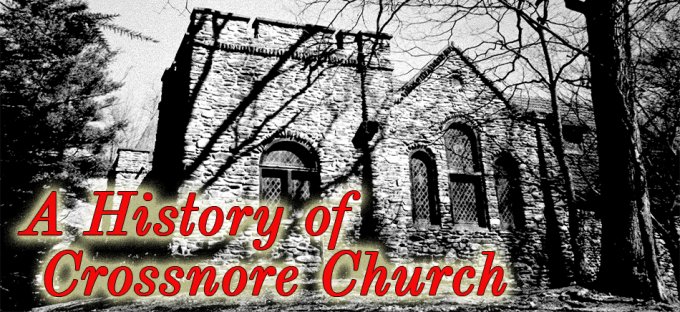
Our History - The Miracle in the Hills Church
In the early 1900’s a small group of believers met in the home of Mr. and Mrs. Potter Brown for Sunday School and worship. Since no minister was available, Dr. Eustace H. Sloop led the service.
In 1916, a small chapel was built at the cost of $300.00 on land given by Mr. Brown. It was located about a quarter of a mile southwest of the present location. In 1917, the congregation petitioned the Holston Presbytery for permission to be organized as an official church. On May 18, 1918, the Presbytery formed a commission consisting of Dr. C. C. Canon of Bristol TN, Dr. J. A. McMillan of Johnson City, TN, the Rev. Edgar Tufts of Banner Elk, and Elders E. C. Robbins of Pineola and Dr. W. C. Tate of Banner Elk for this purpose.
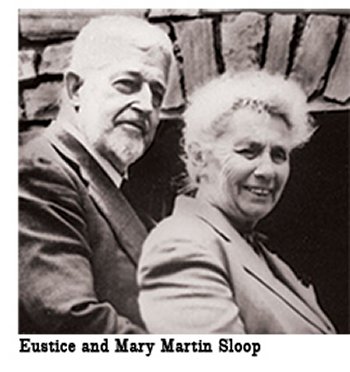
There were thirteen charter members received on this occasion: Mary Martin Sloop, E. H. Sloop, A. F. McKinney, Minnie McKinney, Gwendolyn McKinney, Newton Clark, Mary J. Clark, Jemima Biggerstaff, Mary L. Duncan, Mary S. Pfaff, Effie Vance, Georgie Biggerstaff, and D. F. Presson. At the close of the service, a congregational meeting was led by Rev. Tufts in which E. H. Sloop was elected elder and A. F. McKinney as deacon.
The church celebrated its 100th anniversary on July 22, 2018, with over 200 people gathered for worship and a luncheon. Rev. Maggie Palmer Lauterer is the author of our centennial history: Crossnore Presbyterian Church Ministry and Mission: The First 100 Years and the book is available through the church office. The Reverend Maggie Lauterer is often referred to by some, as "The Singing Pastor";. She grew up in Crossnore attending our church as a child. She became an ordained pastor and served several congregations before honorably retiring in 2017. Maggie has returned to her childhood church and is actively involved in assisting with preaching, worship, music, and Bible study leadership.
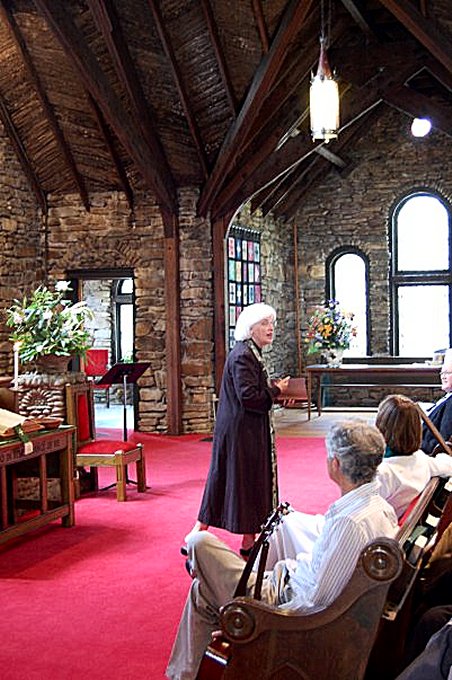
In the early 1920s, the congregation began planning to build a bigger church. They approached Will Franklin, a local stonemason and carpenter, who at that time was 70 years old. He reluctantly agreed to help. Groundbreaking was a memorable day with Cordelia Dellinger Kidder and her sister Ruth digging the first shovelful of dirt. The story of “Uncle” Will Franklin and the building of the church is told in Miracle in the Hills (pages 159-166), Legette Blythe’s book about Dr. Mary Martin Sloop, founder of Crossnore School, Inc.
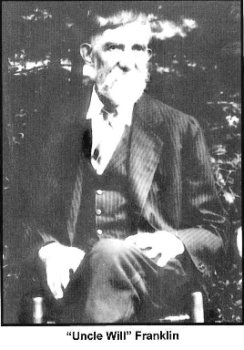
Uncle Will could not read or write but he built the church from plans prepared by the architect, Leonard White of Greensboro. Work on the stone building began in the summer of 1924 and continued in 1925. Two hundred loads of rocks were hauled by horse and wagon from the banks of the Linville River. High above the pulpit, on the inside wall, it is possible to see where work stopped one year and began the following.
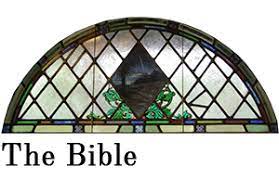
The stained-glass windows over the cross are in three sections, symbolizing the Holy Trinity. Scores of other Biblical symbols may be seen set into the windows of the nave. Certain windows along the side aisles swing open on unique hinges. The pulpit was obviously built for permanence and for tall preachers. Into the front of the pulpit, the builder placed a thick sheet of metal bent into the shape of an open Bible. On each of the two flower pedestals, he placed twelve raised stones to symbolize the twelve tribes of Israel and the twelve Apostles. The ceiling is made of chestnut bark and the life-size hand-hewn cross is from a century-old log of local white pine. When first built, the church was lighted with electricity generated at the power plant built by Dr. E. H. Sloop on the Linville River, half a mile below the church.
One of the rare and unique features of the sanctuary of the church is the painted patterns on the glass windows. The exact history of these seems to have been lost in the fire which destroyed most of the church records but in a number of ways their history can be pieced together from other sources.

The first worship service was held in the sanctuary on August 8, 1926. Crossnore Presbyterian Church is now listed on the National Register of Historic Places.

McCoy Franklin
The first pastor of Crossnore Presbyterian Church was McCoy Franklin who served from 1919 until 1933. Since that time, the following have served: John W. Bolick (Supply), Ira H. Rawles (1939-1941), J. S. Johnson (1947-1950), W. A. Nicholson (1950-1952), Earl M. Miller, Jr. (1952-1968), Ted Blackwell (1972-1974), Harold Stone (1975-1980), Fred J. Stevens (1980-1988), E. O’Dell Smith (1986-1987), Dewitt T. Smith, Jr. (1987-1989). A series of guest ministers then filled the pulpit and Dr. John Craven served as Interim Pastor for a year prior to the call of the reverend Dr. Paul S. Smith (1991-2008). The Reverend McCoy Franklin (son of the first minister) was the Interim until the Rev. Kathy Campbell has served at Crossnore Presbyterian Church since 2009 and loves being a small church pastor. Before coming to Crossnore, she served in campus ministry at six colleges/universities in North Carolina and Virginia in addition to being a solo pastor, co-pastor, and interim pastor. A native of Omaha, Nebraska, she received her B.A. in History and Political Science from Warren Wilson College and her M.Div. from the Divinity School of Duke University. Rev. Campbell is married to Dr. Karl Campbell, Professor of History, at Appalachian State University, and they are proud parents of Joanna Campbell, who earned her Ph.D. in Chemistry at Duke University and graduated in May 2023.
Our active congregation is continuing the legacy passed onto us by those generations before us. We invite you to join us for worship on Sunday mornings at 11 a.m. We are a church that welcomes everyone and provides worship, Bible study, fellowship, and many opportunities to serve the local community. We also have a sister congregation in Guatemala. During the pandemic, in 2020, our church was able to donate over $70,000 to those in need in Avery County and funds for basic food supplies to Guatemalan brothers and sisters. We continue this mission today. Our next big project is replacing our 100-year-old sanctuary roof. The cost is projected to be around $400,000. If you would like to contribute to the new roof, please send a check to Crossnore Presbyterian Church, P.O. Box 386, Crossnore, NC 28616
Our Historic Windows
One of the rare and unique features of the sanctuary of the church is the painted patterns on the glass windows. The exact history of these seems to have been lost in the fire which destroyed most of the church records but in a number of ways their history can be pieced together from other sources.
On the sanctuary floor level - that is to say: the nave, transepts, entrance, and music rooms - are a total of fifty separate windows. Eight more windows comprise the clerestory, but these are almost entirely of opaque glass with only one or two scattered patterns in them. The patterns vary greatly but tend to repeat themselves, and most can be easily recognized as having a biblical connotation, such as arks, crosses, stars, anchors, crowns, chalices, cups, lamps, candles, scales to measure weights, doves with a short branch in their beaks, bunches of grapes and lilies. The crown of thorns has INRI written inside. There are open Bibles with HOLY BIBLE written across, and the stone tablets of the commandments of Moses bearing the Latin numbers I to X.
Perhaps the quaintest recurring pattern is the Sacrificial Lamb. It consists of a reclining sheep on an altar under which two layers of logs are ready for burning; the lamb waves a banner like a medieval knight. The patterns in the transepts appeared early in Christian art and were very popular in manuscripts, paintings, and sculptures in medieval churches. These are the four Evangelists as derived from the books of Ezekiel and Revelation, shown as a man and eagle on the north side, and a lion and ox on the south side, all with wings. The artist labeled them: ST MATTHEW, ST JOHN, ST MARK, AND ST LUKE. To Christians, Matthew symbolizes incarnation, Mark- resurrection and courage, Luke- renunciation, and John- ascension to immortality.
The inconsistency in the lettering suggests an artist is not very used to handwriting techniques. On the frame between the front windows on either side of the pulpit are two similar small bronze plaques saying (these windows are) In Memoriam for Jane M. Berry (1812-1886) by her daughter Jane Berry Smith.
Mrs. Smith was the widow of Johnson C. Smith and was a major donor to Johnson C Smith University and Johnson C. Smith Seminary, two Presbyterian USA institutions in Charlotte, founded in 1867 by two Presbyterian ministers. Mrs. Smith resided in Pittsburgh, PA, and became interested in Crossnore through the efforts of Rev. C. McCoy Franklin, the church pastor, who had made several visits to the Pittsburgh area seeking support for both the church and Crossnore School.
The front entrance room and the music room on the other side both have windows with inscriptions (with minor variations) at their foot, three in the entrance room and two in the music room. The lettering is in capitals: HIGH POINT GLASS & DECORATIVE CO. Three of these have N.C. added below this maker’s name. No date is given. The placement of the bronze plaques and the fact that there are two suggest that their inscriptions refer to all the windows in the church, a point reinforced by the unity of the overall plan. Many of the patterns are cut off as if the windows had been made and then cut to the needed size. All the windows are identical in style, so appear to have been made at one place at one time and were therefore made according to specifications supplied by the architect and installed in early 1926. The sanctuary windows have been repaired and sealed and the wooden frames have been repaired and painted. The colors of the designs on the windows have also faded badly over time. Many thanks are due to Ted Kidder who spent long hours repainting the patterns and bringing the colors back to their original brilliance. All of this was made possible by generous donations from the congregation and friends.

